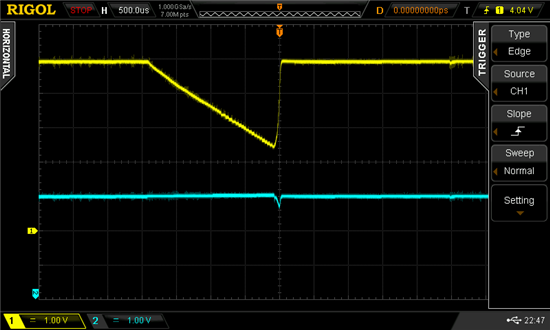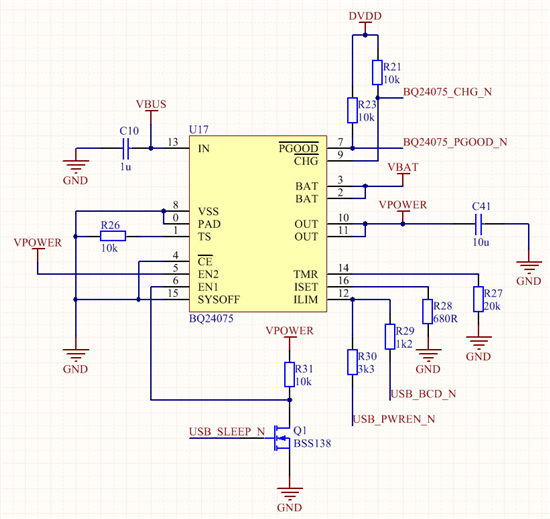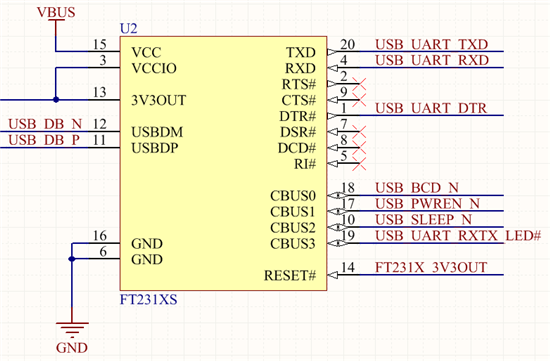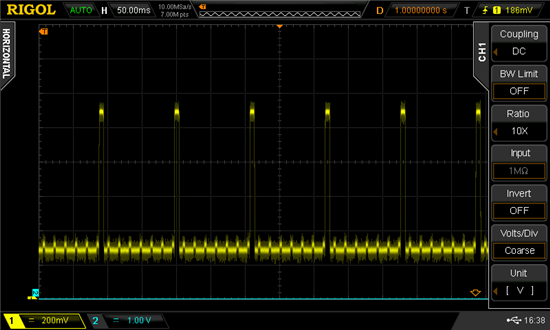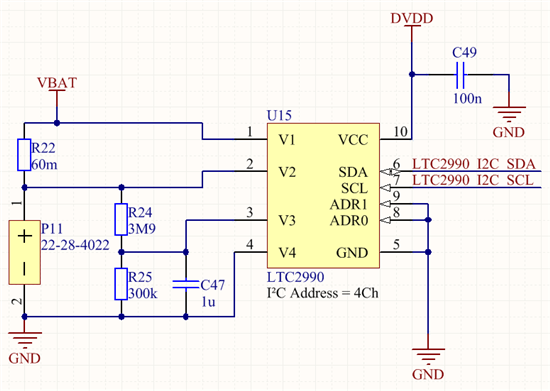Hi Everyone,
I'm using the BQ24075 to charge at battery from a USB input while running my application. I'm finding however the output supply of the BQ24075 (which is connected to two regulators providing 3.3V and 5V respectively) is crashing approximately every 600ms, this crash lasts for around 2ms in duration. The voltage appears to crash from around 4.9V to approximately 2V at the output (pins 10,11) - shown in Yellow on the plots below. Note, in this testing/configuration I have disconnected the battery, it is not present or connected to the system.
I find that I'm getting two crashes that consistently occur, one after the other. This is shown in the following oscilloscope plots. These two pulses each occur 1200ms apart and are offset from one another by 600ms.
From my testing I would conclude the following:
- Both plots are essentially showing the same issue. The duration of the crash is the same, as well as the voltages (approximately).
- In the first part of the crash, the plots are showing the constant current (linear) discharge from the input capacitors at the regulators. I.e. the regulators are attempting to draw X mA of current to provide either 3.3V or 5V respectively at a given load.
- The input on pin 13, is practically stable, it varies a little between 4.9 and 5.1V, nothing that wouldn't be expected though. There is a small drop of voltage on the input line following what I assume to be Q1 (inside BQ24075) switching back on at the end of the crash, causing a small inrush of current from input pin 13.
- The reason for the two different waveforms, is that my system is attempting to start up in the first scope capture. Since the current draw is higher during start up, we see a steeper drop in the input capacitors at the regulators who are drawing more current to meet the system startup load. The result of this is my micro-controller rebooting approximately every second as once the voltage at pins 10,11 drops below a threshold voltage, the 3.3V regulator cuts out.
Here is diagram of my application:
VBUS - 5V input from USB
VPOWER - output voltage from BQ24075, connected to regulator inputs via 34.7uF of capacitance (parallel combination of 10uF at BQ24075, 10uF at 3.3V regulator, 14.7uF at 5V regulator)
VBAT - connected to the battery (no battery present / disconnected, note: 4.2MOhm path to ground exists via a fuel gauge)
DVDD - 3.3V supply from regulator, used to power the micro-controller and pull up the CHG_N and PGOOD_N signals.
USB_BCD_N - (Not Battery charger detected) - currently tied to ground to eliminate this variable (confirmed stable at zero volts)
USB_PWREN_N - (Power enable) - currently set to high impedance to eliminate this variable
USB_SLEEP_N - Currently set to drive one to eliminate this variable (confirmed stable at 3.3V, above Vds of the inverting MOSFET).
This combination gives EN1 = 0, EN2 = 1; input current controlled by ILIM.
With USB_BCD_N = 0, and USB_PWREN_N = Z, resistance at ILIM should be 1k2, allowing for approximately 1.42A of current to be drawn from IN at pin 13.
As a minor side note, the USB_*_N signals are connected up to a FT231X UART USB bridge with battery charging detection. To simplify testing and analysis, I have temporarily programmed the CBUS pins to either drive 1, drive 0 or be tri-stated as per the notes above. Both scope captures above were taken in this configuation to eliminate any issues coming from the FT231XS.
Well, that is about as much as I can think of for the moment, I hope I have provided enough information about my application to help you understand the presented issue. However if you need more information, please respond and I'll gladly post up other scope captures of different signals or parts of my circuit.
All the best,



